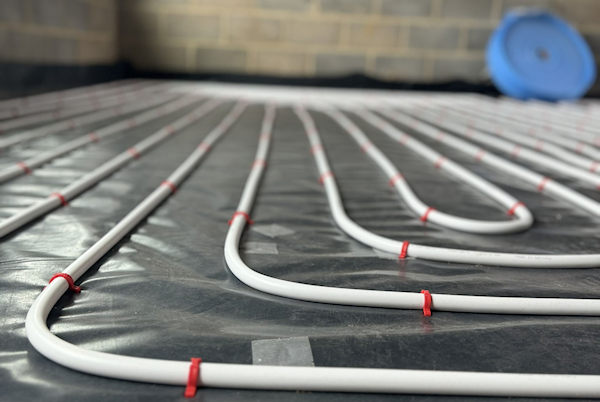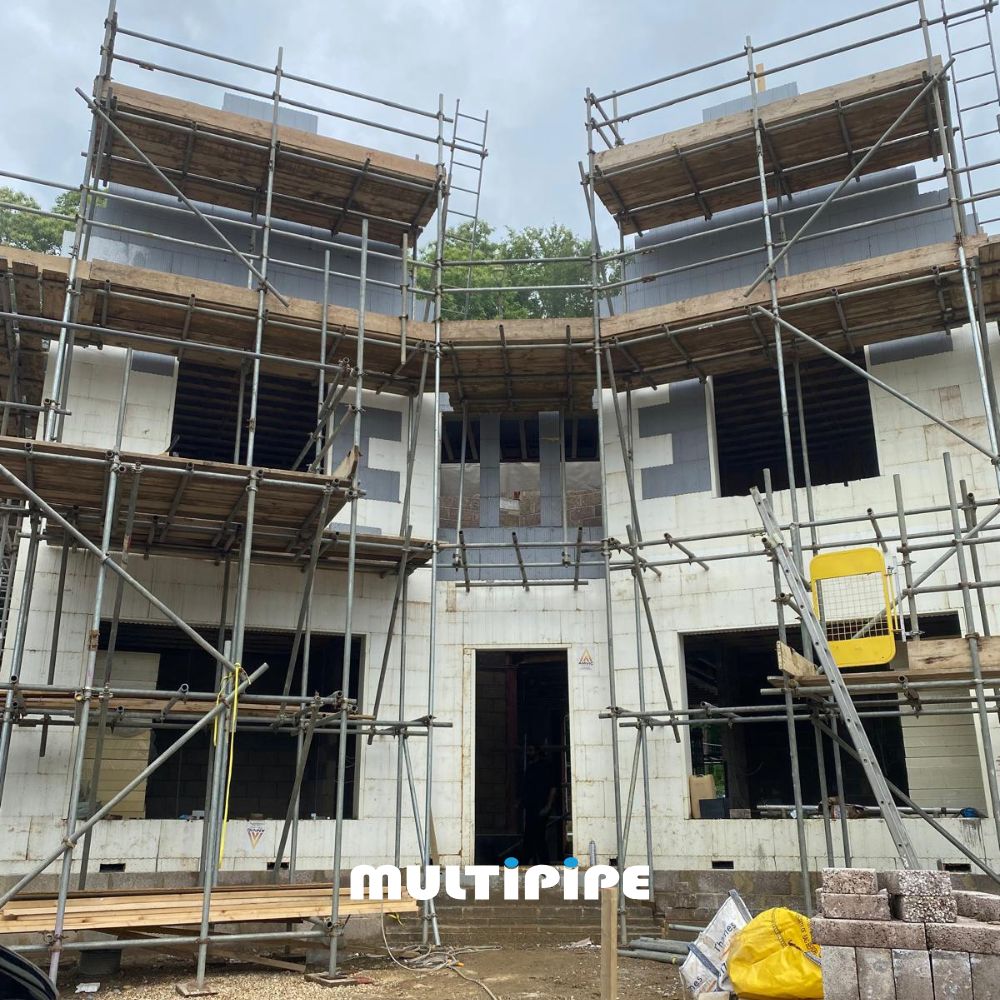
Understanding the Impact of Pipe Centres on Underfloor Heating
For far too long, I have come across jobs where, either under pressure from the heat pump manufacturer or the installer themselves, installers push for closer and closer centres. In this article, I want to explain the real difference moving pipe centres makes. And that there are far better ways of getting more heat out of your system.
This week’s #TechTuesday is a full of information, so if you’d like to go through any of the points in the post, feel free to call Dave direct on 01245 850799!
I have been asked to install pipe at xxx centres by the heat pump provider. Why?
I get asked this question a lot, and I think there are a couple of reasons a heat pump manufacturer would want a very tight centre. One, because the property’s heat loss is high (which may then be valid), or two, the calculated flow temperature is very low.
If you are constructing a new build, then heat losses will be around 50-60w/m2, and if built to a higher insulation standard, then much lower than this. So, the amount of output required is tiny. However, by having very tight centres with a mean 30°C water temperature, you will get around 65w/m2 of heat output in an ultra-insulated building. So, in this scenario, with, say, 40w/m2 heat losses when it is -5°C outside, it will produce over 50% more energy than required.
In the UK, it’s not often -5°C outside, so you are massively overheating the property most of the time. Most people would think this is ok, but it can often make the system uncontrollable, even with load compensation thermostats. In my eyes, the system should never be more than 20% higher than the heat loss.
Ok, but I do not know my heat losses…
Not knowing heat losses is the single biggest issue I have found concerning pipe centres. By not knowing the heat losses, you are operating blind in a project.
How can you design a system to overcome something you do know? By ensuring you carry out your heat loss calculations, you are saving yourself trouble in the future.
It is also worth remembering that heat output is NOT a heat loss. This is just the potential output the system can do if the losses are higher than the output. You are going to get a phone call that the “system” is not working…
So what difference do pipe centres make?
This is an open question because it does depend on the system itself. But as a general rule of thumb, for every 50mm closer the pipes are, you gain around 8w/m² only. This might sound like a good gain, but there are other ways to protect yourself.
Underfloor Heating Floor Coverings
The type of floor covering used is the single biggest killer of underfloor heating output. I understand that floor coverings are generally out of your control and come with loads or limits, including the temperature of the floor itself. Unfortunately, this often means that closing centres will overheat the floor past the requirements anyway. Let’s compare two outputs.
| System 1 | System 2 | |
| Mean water temperature (Flow and return average) | 30°C | 30°C |
| Pipe centres | 150mm | 150mm |
| Floor construction | 45mm screed above pipe 4:1 sand cement | 45mm screed above pipe 4:1 sand cement |
| Air temperature | 20°C | 20°C |
| Output | 55.5w/m² | 27.8w/m² |
So what would cause the same system laid the same way with the same input temperature to be a massive 27.7w/m² lower, almost half the output? The answer is simple.
The floor covering in system one is based on a ceramic tile and a 22mm wood block floor in system two. This is what causes the biggest issue on outputs of system and not centre controlling this controls your system efficiency.
Any other factors?
One of the other key factors is the type of screed used. Even though it is the BS EN 1264 standard, many people have used 75mm 4:1 Mix sand cement, and why not? It is cheap, and the builder can lay it.
However, a sand cement mix has a much lower conductivity than some products on the market. By using Gyvlon’s Thermio screed, you can swap a 75mm screed to 40mm Thermio. This change can drop the flow temperature required by over 2°C for the same output, which is great for low-temperature heat pumps.
In summary
- Pipe centres might not be the answer to a low-temperature operating system.
- Heat lossing should always be carried out to protect you on your job. Designing without it will leave you blind.
- Floor coverings make a far bigger impact than centres.
- Using a more conducting a thinner screed will make a massive difference to heat input or power output.
At Multipipe, we can work with you and your providers to reassure you that the system design will meet your needs. This will give you peace of mind and the right system for your client to ensure they are happy. We have in-house staff fully qualified in heating system design and operation the help. Call us now on 01245 227630 for more information.











